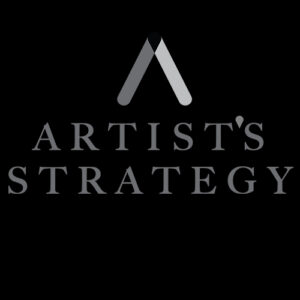
Most actors enter this industry without ever expecting to utter the words “search engine optimization” (SEO) in a professional context—unless they happen to be Jeremy Strong rehearsing a cringy negotiation scene on Succession. And yet, here we are uttering those exact words—except, unfortunately, in real life and not for an award-winning television program.
The twisted irony is that before you can become Jeremy Strong-level famous, you need people to be able to discover you on the internet. And for them to actually find you, you need “search engine optimization”—the very phrase Jeremy Strong delivers to wide-eyed critics and Emmy voters season after season.
Less established creative professionals without that kind of name recognition risk throwing thousands of dollars into content creation, press releases, and branded websites only to have it buried several pages deep in Google’s search results. If you’re generating all of this content but not giving it the SEO treatment, you’re squandering an opportunity before it can even materialize.
What makes SEO so distinct from any other marketing best practice is its strength as an inbound tactic, meaning it draws customers to your services—at their leisure and convenience—rather than interrupting their day with outbound strategies like ads, newsletters, or promotions. In short: good SEO makes people come to you.
Creatives interested in SEO can find countless courses, tutorials, and consultants to pay, but at the end of the day, they’re all going to teach you the same principle: SEO is about getting in somebody’s head.
If I’m a casting director looking to audition a zany red-headed improv artist with a gritty Irish brogue for a new production—and you happen to be just that person—then those terms better be strategically placed in your web copy. Otherwise, you’re self-inflicting a rejection before the casting director can even discover you for themselves.
The trick is to put yourself in that person’s shoes—a casting director, producer, costume designer, whoever!—and make an educated guess about what they’re looking for. What questions would they be asking Siri? What are their assistants frantically Googling? What words would they literally be typing into their search engines?
Step 1: Free associate. In Google, begin to type words associated with your site and brand to see how Google autocompletes each one. This is more than just a silly distraction— it’s Google effectively giving away people’s top searches that include the words you’ve typed in. Thanks, Google!
Step 2: Choose a route. Does any one of those autocompleted options make you nod with approval? Is there one that feels like it’s tailored just for you? Settle on one such phrase and see what type of results show up when you search for it on Google. What makes it valuable, engaging, or otherwise so popular? Are there things you can identify about word choice, formatting, length, or subject matter that’s common across all the top performers? Take your time on this step and just absorb what’s out there, without leaping to judgments.
Step 3: Commit to a niche. Once you’ve taken all of that content in, ask yourself what’s missing or subpar among the top results on Google. Does something come up short when you’re reading through those first results? Perhaps there’s an angle that goes unexplored or a question that goes unaddressed. This exercise helps you narrow down your own niche and ensure you’re creating content that has a specific aim in mind.
Step 4: Rinse and repeat. Do this process with at least five search terms. While the work seems tedious, bopping around the internet in this methodical way will give you a leg up when planning your content schedule and empower you to make data-driven choices about what to publish and when.
This approach is valuable not only for attracting industry insiders but for building a base of regular, loyal fans. For example, if you tend to appeal to live action role-playing geriatric millennials—and are banking on them showing up to your movies or performances—then it helps to learn what they’re searching for on Google.
SEO gives you just the right amount of creative constraint to keep you focused and productive, and prioritizing it in your content—be it a blog, newsletter, or portfolio website—ensures the people who have yet to discover you actually have a chance to do so!
___________________________________________________________________________
Go Ahead, Give Yourself Some Credit


Artist's Strategy offers artists the opportunity to strategize and create tactical next steps towards a successful, fulfilling career. Based on tested business principles, Artist's Strategy helps you design a tangible path towards a sustainable future. Incorporating and using the basic tenets of a healthy business, we will help you set a one, three or five-year-plan that will work for you and keep you on track to seeing real results. With Artist's Strategy, you will work alongside founder Joshua Morgan to identify the strengths and opportunities of your business and learn more about how to stabilize and grow. How long and how frequently you work with Artist's Strategy depends on your individual needs and resources. Contact us to discuss a plan that could work for you.
Read Full Profile© 2021 TheatreArtLife. All rights reserved.

Thank you so much for reading, but you have now reached your free article limit for this month.
Our contributors are currently writing more articles for you to enjoy.
To keep reading, all you have to do is become a subscriber and then you can read unlimited articles anytime.
Your investment will help us continue to ignite connections across the globe in live entertainment and build this community for industry professionals.